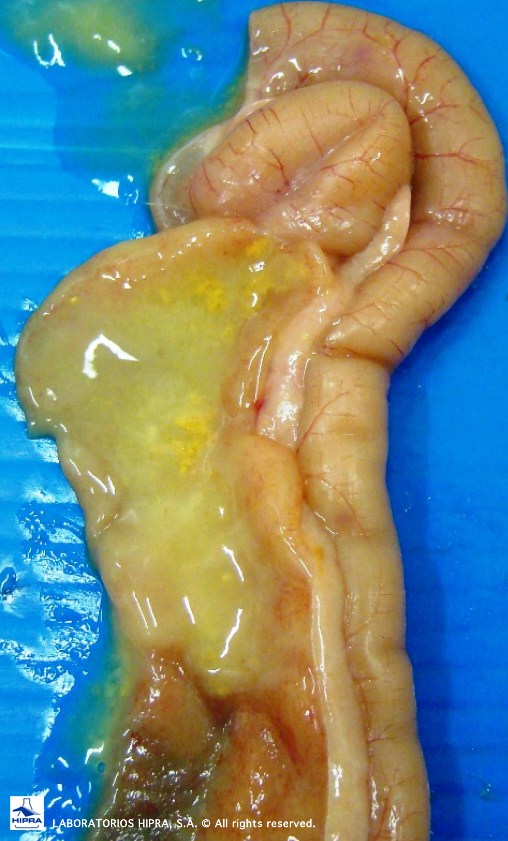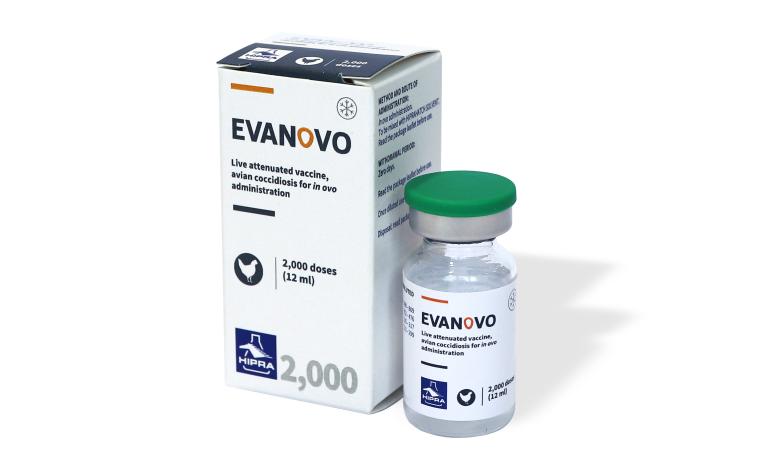Coccidiosis in poultry is one of the diseases that probably cause most damage in the broiler rearing industry. It is not a case of producing high mortality within flocks but a subclinical process affecting economic performance, greater use of antibiotics and a loss of environmental farm conditions that will probably affect animal welfare.

E. praecox in the duodenum: A type of coccidiosis that is not clinical but causes a decrease in growth and feed conversion.
Coccidiosis in poultry has become a truly complex disease that is not only an intestinal disease but also involves other issues that affect global production. In the past, coccidiosis was diagnosed as a clinical disease –even by the farmers- with coccidiosis caused by Eimeria tenella being the most simple example of this disease.
Nowadays, and depending on the species of Eimeria involved, the disease can increase its complexity by producing not only a clinical process but also problems of global enteritis or even of immunosuppression.
From an economic perspective, the figure produced by the industry regarding the cost of coccidiosis in poultry is more than 1 billion US dollars.
Coccidiostasts have been used for a long time and, even applying a rotation strategy with different molecules, the risk of generating resistance is always present. We should take into account that, in fact, in recent years no new coccidiostasts have been launched on the market and we are working with the same old molecules to control coccidiosis in poultry.
Improvements in avian genetics have developed broilers with a high growth rate and a lower rate of feed conversion. This means that the efficiency level is at a maximum, and together with this positive development, the quality of meat carcasses should be at the same high level. Nutrition plays a very important role in this but, more than this, intestinal integrity is essential in order to achieve maximum profitability of feed consumption.
Apart from these economic requirements, there are two important challenges for the industry: to meet welfare requirements and to reduce or even abandon the use of antibiotics. Under these circumstances, prevention is very important and, considering the potential ability for rearing today’s broilers, prevention of coccidiosis in poultry is a must.
The use of AGP (Antibiotic Growth Promoters) is a practice that was banned in Europe several years ago and is starting to be regarded with suspicion on other continents such as America and Asia. Nutrition companies have been looking for feed additives that could replace the effect of AGP apparently with good results but a proper strategy on nutrition is key: from raw material selection to appropriate physical presentation.
In this context, prevention of coccidiosis in poultry is regarded by companies as a major problem which must be tackled using the most appropriate means. Rotation with live attenuated coccidiosis vaccines is a strategy adopted by a large number of production companies all over the world. Rotation means using vaccines in 2 to 3 rearing cycles (Rotation program with coccidiosis vaccines) out of the total number of cycles annually. The purpose of this program is to maintain a low and sensitive population of oocysts on the farms, thereby minimizing the effects of coccidiosis in poultry.
There will probably be little room in future for the use of antibiotics or other substances regarded as antibiotics in the poultry industry. Now is the time to consider the use of vaccines for controlling coccidiosis in poultry.


